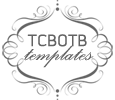Last year I was privileged enough to be able to attend a training opportunity help by my school district. The program is called Choosing Excellence and is centered-around the continous improvement models of Baldrige and Glasser. Though the main objective of the training was to teach teachers how to write SMART goals, write a PDSA, and develop the questioning process, but one portion that stuck with me was Glasser's choice theory.
Essentially, Glasser states that human existence is driven by five focal needs:
- Survival (Which basically consists of food, clothing, and shelter)
- Belonging (Love and connecting)
- Power (Feeling significant and validated)
- Freedom (The ability to choose)
- Fun and Learning (Pure enjoyment
After the training, I thought to myself, "How am I every going to judge and determine these needs in my students and what difference will it truly make in the classroom?" I needed to figure out the purpose and desired effect before I put anything into place. I spoke with several of my colleagues and my administration. They had suggested using a "Needs Wheel" as other school had done, in order to "inventory" students' feelings. Once I made the "Needs Wheel" I explained the meaning of each need, provided examples, and modeled the process to for the students. I was very interested to see how things would turn out.
As expected, for the first few weeks everyone indicated that they needed more fun in their, "Quality World." After the excitement wore off and students realized that by indicating they needed more fun in their day, would not mean a trip to the playground, they started taking the choice wheel a little more seriously.
Once students were accurately representing their feelings, I discovered that many of my students needed freedom, the ability to make choices through out the day. I get that and I could see how a student may feel that way. So from there I decided to restructure somethings thought out my day, in order to help student feel as if they have a say in the matter, as if their opinions count, and as if they are free to do what they want to do, rather than what they are told to do.
In order to achieve this goal in an organized manner, I decided to restructure my reading centers. There would be two types of activities for reading centers: Required Activities and Choice Activities. Once students were finished with their required activities, they could move on to their choice activities. They could do any activity from the provided list, it was completely up to them. Here are some of the choice reading activities that students were able to choose from:
- Complete vocabulary webs for a word on the word wall.
- Complete Greek and Latin root work activities.
- Identify spelling words in a version of the game Boggle.
- Complete a Top 10 activity on a given topic.
- Pick a goofy picture from my picture files and use it to generate ides for a story.
- Read an A.R. book silently
- Read Nation Geographic magazine articles
I noticed that after I put the choice centers in place that students were no longer, "on edge." They were willing to complete the required activities in an appropriate amount of time. They were excited about the new activities and did not even realize that learning was a major component in all of these "really fun" choice activities.
Thanks for stopping by!
Jamie
Thanks for stopping by!
Jamie








No comments:
Post a Comment